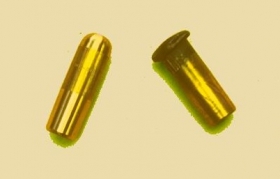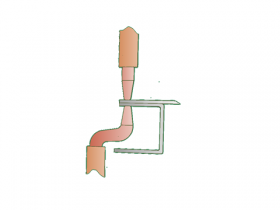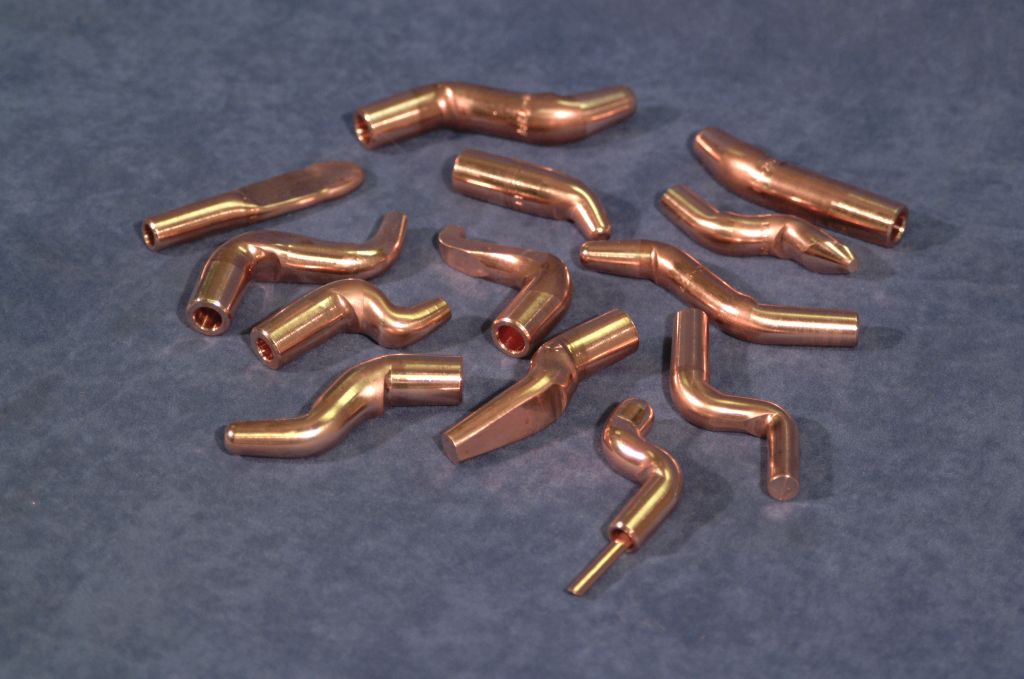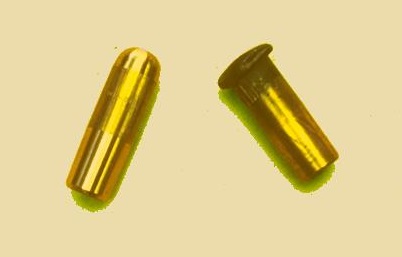
Spot Welding
Questions and Answers
Electrode face mushrooming is the normal wear mechanism of a spot welding electrode. To slow this process or prevent excessive mushrooming one must control several factors in the welding process.

EXTREME MUSHROOMING
Resistance welding over a lip, in a corner, or in a box might be a perfect application for a double bend electrode.

Above is a sketch showing an example of a double bend electrode welding in a tight area. There are many applications like this that a double bend full size electrode or double bend shank and cap will allow you to reach an otherwise difficult location to weld. Double bends can be water cooled to increase life. Double bends come in many offsets and sizes as shown below.

DOUBLE BEND ELECTRODES
Reference: RWMA - Resistance Welding Manual 4th Edition
SINGLE AND DOUBLE BENDS CAN REACH THAT EXTRA DISTANCE IN RESTRICTED AREAS

Sometimes we have to reach inside a box or over a feature in a part that stretches our imagination. A double bend electrode might be the answer but a single bend electrode might also get us that extra distance. Both can be water cooled and deliver good force into restricted areas.

Reference: RWMA - Resistance Welding Manual 4th Edition
Electrodes are available in many sizes and shapes to fit most needs in industry. To choose many considerations come to mind. The first decision would be full size vs cap electrode. Are you a job shop or highly automated usually decides this.
When welding galvanized and other coated materials a layer of oxides and brass builds up on the face of the electrode. During the first twenty five to fifty welds while this layer builds up and develops equilibrium, the welding results can be inconsistent. This period is called conditioning.

EXTREME MUSHROOMING
Page 40 of 44
Have a Question?
Do you have a question that is not covered in our knowledgebase? Do you have questions regarding the above article? Click here to ask the professor.
